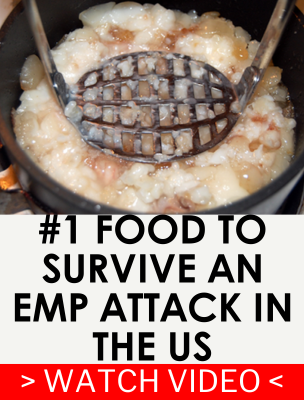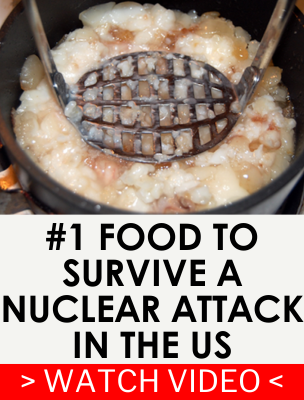War brings death and destruction and erases the way of living people are used to. Even so, war lets life follow its course and people try to survive with all the challenges it brings. I’ve been invested emotionally in the Russian-Ukraine war since I have a couple of friends involved in providing humanitarian aid to various parts of Ukraine.
I’ve wanted to know about the challenges the Ukrainian people are facing from the beginning and tell their story since many preppers and survivalists are gathering knowledge and adapting their prepping plans following the information they are getting from various conflicts happening all over the world.
A few statistics regarding the Russian-Ukraine war
The Russian-Ukrainian war, which escalated into a full-scale conflict in February 2022, continues to have devastating effects that few people are aware of. There are a few statistics available that help us grasp the serious of the situation, even though many agree the data is incomplete.
Casualties: In late 2023, over 10,700 civilian deaths have been confirmed by the UN, though the actual number is likely much higher due to incomplete data from active combat zones. While precise figures are harder to confirm, U.S. sources estimate around 315,000 total casualties for. Ukraine has generally avoided publicly disclosing its losses to maintain morale and strategic advantage.
Displacement: Nearly 6.5 million Ukrainians have sought refuge abroad, mainly in European countries. Additionally, 3.7 million are internally displaced within Ukraine. A total of 14.6 million people in Ukraine requires humanitarian assistance.
Destruction: Infrastructure damage is extensive, with cities and villages subjected to missile strikes and shelling. Over 27,500 homes have been repaired so far, but many areas remain uninhabitable.
Economic Loss and Reconstruction: The estimated cost of reconstruction and recovery has risen to $486 billion, encompassing rebuilding housing, infrastructure, energy systems, and public services. Immediate needs for 2024 are estimated at $15 billion.
Living Conditions: Current winterization efforts have provided some relief, but harsh conditions and destroyed infrastructure have left millions in need of shelter, energy, and basic services,
How life goes on for the Ukrainians
Shelter
Houses are being damaged in a various of ways by both direct and indirect hits (blasts of nearby projectiles). Although many of those outside of conflict zones may not be aware, glass injuries represent one of the most common dangers people have to face during a war. Glass shatters and creates various injuries so they have to take various precautions, like boarding up windows or taping the entire glass surface of windows and doors.
Compared to the homes in the United States, houses build in Europe, especially in Eastern Europe are sturdier. They are made of bricks, cement panels or blocks and cand withstand shrapnel penetration better. Even so, roofs are the vulnerable points of most homes and they require constant repair, especially during the spring, autumn and winter season when rain and cold are constant problems. They have no way to protect the roofs from blast waves and munitions so constant patching is required.
Plastic is mostly used for repairing jobs because it’s lightweight and easy to work with, and the holes can be sealed from the inside of the home without much strain. In fact, it’s recommended to avoid climbing on the roof since even civilians are targeted by the enemy.
It’s important to note that repairing the homes is almost always out of the question and patching is the name of the game for them. Building materials are hard to come by and no one has a stash of such materials since these were used to reinforce the homes when the conflict started or to build various barricades.
Another tactic employed by Ukrainians is to use their cellars (since every single country home has one) as temporary shelters, especially during the night. They often use their cellars for two reasons, first it’s out of sight (meaning light sources and cooking won’t pose a problem) and second, because these cellars are near the house and the danger of debris falling on the inhabitants is lower.
Public utilities
Public utilities in Ukraine, including electricity, water, and heating, have faced severe disruption due to targeted attacks on energy infrastructure by Russian forces. Key systems have suffered substantial damage, with up to 50% of Ukraine’s winter electricity generation capacity compromised. As a result, rolling blackouts and outages of 4–18 hours daily are anticipated, especially during the harsh winter months
Electricity
Electricity is vital for heating, water supply, and other services in urban areas. The loss of power often halts water distribution, disables heating systems, and isolates residents in high-rise buildings without functioning elevators. In rural areas, the lack of electricity complicates access to basic needs like clean water and communication.
To overcome power grid downtime (planned or otherwise) the people often resort to using generators. However, not everyone can afford one and the government has abolished vat and custom duties in hope of making generators more affordable. Even so, the price of a generator equals three to four months of income for the average family.
Most are dealing with the darkness by buying a solar panel or two from the black market or by using alternative means of electricity like car batteries. Those in rural areas do not afford to use large appliances and still rely on candles to bring some light into their homes.
Water
Since electricity doesn’t flow constantly in the city, the water pumps can’t function properly. The government provides free water to residents in urban settings while those from rural areas still rely on water wells for their drinking and cooking needs. Rain water collection is serious business because the people from both living environments use it for bathing and various sanitation needs (like flushing toilets).
Gas
Gas distribution in Ukraine is under immense strain due to the damage to their infrastructure. In rural areas, many households depend on individual gas connections like portable gas canisters. Urban centers are particularly vulnerable, as most residents rely on centralized gas and heating systems, which are severely impacted by attacks on infrastructure.
Ukraine’s domestic gas production meets some of its needs, but increasing demand during winter may necessitate imports, which are costly and logistically challenging given the damaged infrastructure. Plans to modernize and optimize the gas network for domestic use are underway, but investment and reform hurdles remain significant.
Heating
Lack of heat in Ukraine is creates serious problems since during the winter, the average temperature is around 23 degrees F and it gets quite cold. If you do not find ways to heat your home, you will get hypothermia or worse. Does in rural areas which account for almost 35% of the total population, have it somewhat easier since many still have wood burning stoves and they rely on firewood to heat their homes.
Those living in blocks of flats have to rely on central heating to heat their apartments, which you can imagine is not ideal. Some people have managed to modify their apartments to install wood-burning stoves and rely on firewood, wood pellets or coal to heat their homes.
The government has also established safe zones where heating and electricity is available and people often go to these places to spend the night or recharge their devices when needed.
Efforts are underway to restore infrastructure, including emergency repairs and investments in distributed generation systems like gas and solar plants. However, rebuilding remains challenging due to ongoing attacks. The Ukrainian government and international donors are exploring support mechanisms such as subsidized loans for renewable energy and emergency funding for energy repairs
Communication
Communication in Ukraine is mostly done through the internet and mobile communication with telephone landlines suffering constant interruptions. Elon Musk has made Starlink available on the Ukrainian territory but the cost of this service which is around $75 still remains a burden for most families.
Transportation (public and private)
Public transportation in Ukraine has faced significant challenges since the war began but remains operational in many areas. Urban transit, such as buses, trams, and metro systems, continues to function, particularly in major cities like Kyiv, Lviv, and Kharkiv. However, service disruptions occur due to damage from attacks, energy shortages, or air raid alerts. Metro systems, for example, often double as bomb shelters during missile strikes.
Rural public transportation is more limited and has suffered from fuel shortages and damaged infrastructure. Efforts to restore service have been challenging, particularly in war-affected and front-line areas.
When it comes to private transportation, you have access to fuel, but as my friends told me, there’s nowhere to go since traveling is no longer safe in certain areas. Many agree that those who manage to flee before the war started and in the first months, were among the lucky ones since no there are checkpoints everywhere. It’s also forbidden for Ukrainian men to leave the country since they can be enrolled at any time and sent to the front lines.
Food
“Only the soldiers and the rich eat well” is a common saying all over Ukraine since access to food is limited and the food distribution chain is broken. The increasing prices and the food speculators also don’t make things easier for the general public. In areas near the front lines, access to good food is drastically limited and people can get decent food only when supplies are transported by the authorities or various humanitarian groups.
Food is a major concern in Ukraine, in rural areas and people have to rely on their cooking skills to provide nutritious meals for their loved ones. In fact, some of the cooking skills and the recipes the older generation used are now, once again “trending”.
Black Market
There is a flourishing black market in Ukraine especially near the front lines where vice items are in high demand. Alcohol for example is a forbidden item and it’s one of the “necessities” that finds its way in the middle of the battle. The price for a bottle of alcohol is usually three times higher than the regular price.
But the black market provides more than that and you can pretty much get anything if you have the money, from drugs to guns. One thing that is in high demand is a “getaway ticket” and the men pay large sums of money to guides helping them cross the border to the neighboring country of Romania, usually through the Carpathian Mountains.
Concluding
The war relentlessly challenges the Ukrainians, with uncertainty looming over their future. Its profound impact has forever altered Ukraine, leaving no chance of returning to what it once was. The critical question now is what Ukraine will become after the war.





















































































